I've got a signal that consists of 2 square waves at 2 different frequencies in the kHz range, about 10 Hz apart. I need to determine the relative amplitudes of 2 different known frequencies and I was thinking of building a module based around the AD630 modulator.
The ultimate objective would be to get the signal through 2 AD630s and harvest the 2 distinct DCs, but before doing that I would like to test it with a single AD630 and two frequencies.
The circuit is the one from the data sheet (with a different low pass filter, in my case a simple RC, with R = 10 kΩ and C = 3.3 μF, and no op-amp/noise/attenuator at the input) and a ±12 V power supply.
As a proof of concept, I am trying to test it using square waves from two Arduinos. I pass the Arduino output through a capacitor to remove the DC component, since my understanding is that the AD630 prefers AC coupled signals for both reference and the actual input.
My problem is that I am not 100% sure as to what to expect at the output of the low-pass filter for the different scenarios, so I would really appreciate if someone could tell me if the following behaviour is expected.
- No input & No ref & Out = 9 VDC (weirdly it's -9 V after an input is introduced)
- Input = 0 V (actually 10 mV) & No ref & Out =10 mVDC
- No input & ref = 0 V (again 10 mV) & Out = 200mVDC
- Input = 0 V (again 10 mV) & ref =0 V (again 10 mV) & Out = 400 mVDC
- Input = 4.4 V (+-2.2 V), f=100 Hz & ref = 4.4 V (+-2.2V), f = 100 Hz & Out = -4 V DC (same Arduino)
- Input = 4.4 V (+-2.2 V), f=100 Hz & ref = 4.4 V (+-2.2 V), f = 95.2 Hz & Out =250 mVDC
- Input = 4.4V (+-2.2 V), f = 100 Hz & ref = 4.4 V (+-2.2 V), f = 100 Hz & Out = +-4 AC (~20 s beat) (different Arduinos)
Is this behaviour expected? Especially in cases 3 and 4, the DC output seems to be quite high. Finally, since I am interested only in the relative amplitudes, does my reference need to be a sine wave?
